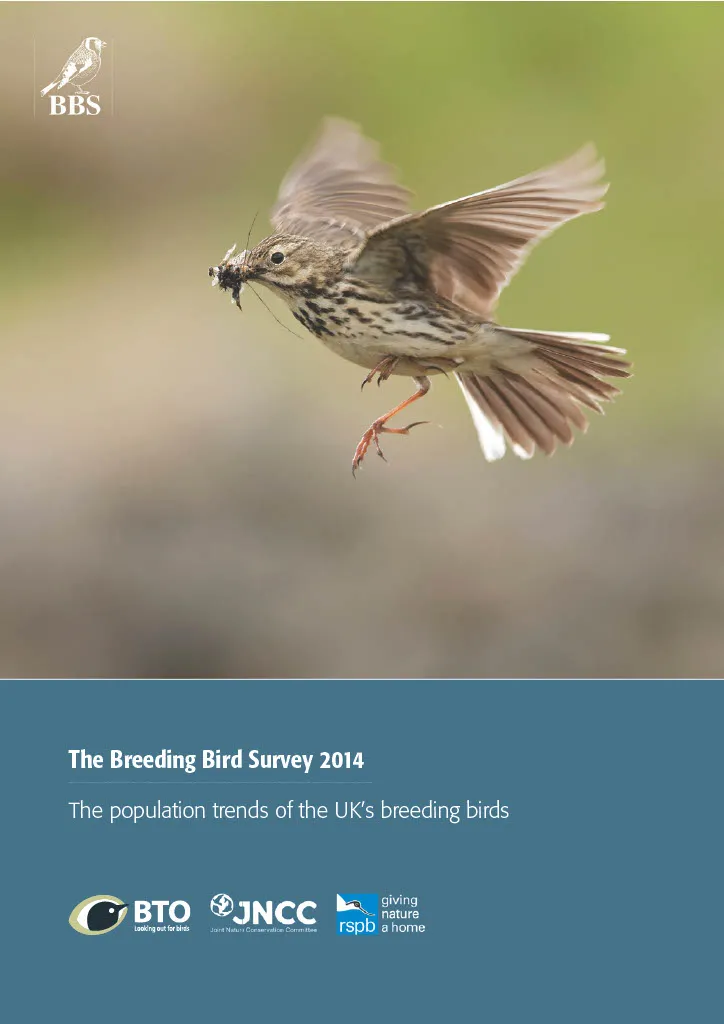BTO create and publish a variety of important articles, papers, journals and other publications, independently and with our partners, for organisations, government and the private sector. Some of our publications (books, guides and atlases) are also available to buy in our online shop.
Annual report of the Seabird Monitoring Programme
Seabird Population Trends and Causes of Change: 1986–2023
This report presents the latest seabird population trends in breeding abundance and productivity using data from the Seabird Monitoring Programme (SMP).
The report documents changes in the abundance and productivity of breeding seabird species in Britain and Ireland from 1986 to 2023, and provides a detailed account of the 2021, 2022 and 2023 breeding seasons.

Search settings
Managing Conflict between Bats and Humans: The Response of Soprano Pipistrelles (Pipistrellus pygmaeus) to Exclusion from Roosts in Houses
Author: Stone, E., Zeale, M.R.K., Newson S.E., Browne, W.J., Harris, S. & Jones, G.
Published: 2015
05.08.15
Papers
Hydrologically driven ecosystem processes determine the distribution and persistence of ecosystem-specialist predators under climate change
Author: Carroll, M.J., Heinemeyer, A., Pearce-Higgins, J.W., Dennis, P., West, C., Holden, J., Wallage, Z.E. & Thomas, C.D.
Published: 2015
31.07.15
Papers
The Breeding Bird Survey 2014
Author: Harris, S.J., Massimino, D., Newson, S.E., Eaton, M.A., Balmer, D.E., Noble, D.G., Musgrove, A.J., Gillings, S., Procter, D. & Pearce-Higgins, J.W.
Published: 2015
The is the 20th annual report of the BTO/JNCC/RSPB Breeding Bird Survey (BBS), containing the population trends of widespread UK bird species during the period 1994-2014
20.07.15
Reports BBS Report

Swedish birds are tracking temperature but not rainfall: evidence from a decade of abundance changes
Author: Tayleur, C., Caplat, P., Massimino, D., Johnston, A., Jonzén, N., Smith, H.G. & Lindström, Å.
Published: 2015
Aim:To quantify avian distribution shifts and the extent of niche tracking in response to changing temperature and precipitation patterns. Location: Sweden. Methods: We used abundance monitoring data to quantify changes in bird species distributions between two time periods, 2000-02 and 2010-12. First we examined shifts at the level of whole distributions using population centroids in temperature, rainfall, altitude, latitude and longitude. We then characterized shifts in temperature and latitude at different parts of species ranges using species response curves (SRC). We accounted for yearly turnover in abundance and sampling effort, and compared the observed shifts with those expected under perfect niche tracking. Results: Most species demonstrated changes in their distributions over the last decade but not all were in response to weather. The degree to which species tracked their climatic niches and the dynamics driving these shifts varied considerably. Only 20% of species shifted in the direction expected given the temperature changes, while few showed a strong response to rainfall. Most shifts did not fully compensate for changes in temperature. Range changes were most evident at the leading edges, but there was some evidence for retractions of trailing edges. Amongst species that tracked temperature, those with southerly distributions were less successful at tracking changes than those in the north. Main conclusions: Swedish birds demonstrated highly dynamic distributions, with many rapid directional shifts occurring over the last decade. However, only a few species kept pace with observed climatic change. Species that did not track their climatic niche may be tolerant to ongoing climatic change or constrained by strong habitat requirements. We demonstrate that measuring range shifts along both environmental and geographic gradients can help disentangle drivers of distribution changes.
01.07.15
Papers
Geographical range margins of many taxonomic groups continue to shift polewards
Author: Mason, S.C., Palmer, G., Fox, R., Gillings, S., Hill, J.K., Thomas, C.D. & Oliver, T.H.
Published: 2015
15.06.15
Papers